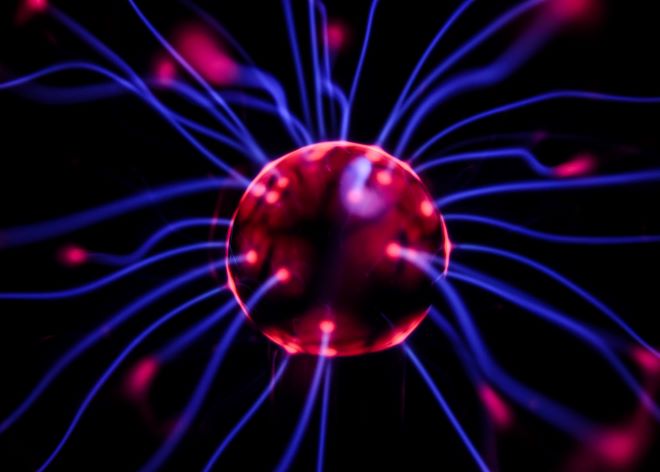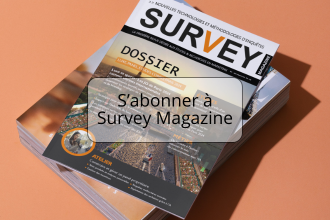As the consumer is today unfaithful and versatile, the classical marketing research struggles to precisely and faithfully identify needs and expectations, tastes and preferences. This is why a method expected to go beyond declarations in order to identify real expectations and feelings gets the attention and generates a growing interest of marketers. This is the neuromarketing, a mix between marketing and cognitive neurosciences. Its aim is to more scientifically approach the consumers’ brain in order to understand it in a better way.
A recent technique
The interest in cognitive neurosciences is quite recent because it was discovered in the beginning of 2000’s thanks to the article about realized searches about stimuli impact on or brain. This article proved that they had an impact on decisions. Since the publication of this article, people consider these reactions (observable by encephalography and by fMRI = functional Magnetic Resonance Imaging) as able to impact on our decisions to purchase. The resulting discipline from these observations and that we named neuromarketing, aims to decrypt complex human brain processes subjected to stimuli that may be brands, products or advertisements. The challenge is to enable brands to benefit from the neurological mechanisms linked to cognitive abilities such as preference, attention, memorization and emotions in order to evaluate their commercial tools’ performance such as publicity, packaging, merchandising, branding and also to make comparison tests with competitors.
The neuroscientific experiences’ results highlight obvious differences between what the consumer says and what his/her brain activity says. This does not advocate traditional surveys that can be wrong according to these observations and induce brands to bad choices. This is perhaps why 80 to 90% of launched products fail quickly. Some examples of failure are taken from famous companies such as the New Coke fail by Coca Cola or the change in Gap logo that was a real failure as well. The consumer’s decision making cannot only be approach via the only conscious reasoning. If we really want to understand the consumers in constant evolution, the neuromarketing development seems to offer promising opportunities.
How to decrypt the brain?
The processing of information from the environment happens first in brain areas dedicated to emotions (another way to say what forms the brain part called primitive or reptilian). Then it happens in the superior cognitive functions. At this step we can see that the primitive brain takes decisions while conscience tempts to find them an explanation. Free will would only be a retroactive illusion. This hypothesis is not yet demonstrated. However brain circuits of reward or of punishment’s fear are activated early in “thought” act of a purchase decision. Emotion is the real brands’ target. The neuromarketing Grail is to find the emotion (sadness, culpability, joy…) that will activate the “Purchase button”. But emotions are nothing for neuromarketers is they are not linked to a good memorization. In Neurofocus, the leader American company in this field, the brain measurement process is distinguished by a specific study. Researchers calculate 3 parameters into millions of registered data corresponding to the brain activity (their captors register 120 000 data a second). Calculation of these parameters is given by curves:
- 1st curve: the attention. It is the easier target to reach.
- 2nd curve: the emotion. This curve must go up and down during the
advertisement display. Emotion cannot be too strong or there will have a
reject from the consumer.
- 3rd curve: memory. It is the most difficult target to reach. The
memory peak at the end of an advertisement is excellent because it is
the moment where people usually are exposed to the brand.
Actions have been made to find a logical phenomenon that advertisers do not always respect: the context. We are exposed to two millions advertisements in our life. This equals to 8 hours, 7d/7 during 6 years. And more than the half of them is out of context. Parameters are multiplied when the consumer gets the message in a favorable context. Briefly, broadcast an advertisement for a steak after the tv show “30 millions of friends” is not advised.
Discoveries and uncertainties
The neuroscientific study permitted to understand a common phenomenon. The attachment to a brand is similar to the religion devotion, it appeals to feeling of safety. The feeling to belong to a community works in our brain in a similar way for religion and for brands. Apple is cool, innovative and stylish, but what consumer knows is that millions of people use its products worldwide. The brand understood it and develops its products functionalities (iTunes, iMessages…) to create a real iCommunity.
This feeling of safety has been observed in many other cases. Especially for anti-tobacco prevention campaigns. The stagnation of the smokers’ number, despite health services, highlighted the fact that messages as “Smoking kills” did not work. Neuroscientific experiences approved this hypothesis. The smoker in front of an advertisement showing somebody smoking felt a feeling of well-being. When he was seeing it later again, his/her brain linked the prevention message to the feeling of well-being…
Another revelation, in principle surprising given the misuse that is made: sex does not pay. The brain activity proved that human being is so obsessed with sex that the staging vision related to sex in an advertisement completely impedes the memorization of the brand. Moreover, sex is so abundant in the today’s media and on internet that it does not recall mystery and it is even more useless.
Neuromarketing can also be used to respect better the consumer’s brain. In the child advertising context we notice that children have not the requested brain structure to distinguish advertisement from real world. Analyzing their reactions to some images could help to display healthier advertisements. The different neuroscientific techniques used today are likely to be improved. Difficulties in temporal and spatial decisions are explained by the complexity in neurological experimentation. And the generated costs are great. Especially in France with limited means (an RMI scanner costs millions of euros!). The priority is given to medical purposes. However, the world can see some companies that hire high level scientists and marketing researchers and that already offer high quality services by showing innovation.
The main measurement approaches in neuromarketing
The electroencephalographic (EEG) test
The EEG test is the direct measurement of brain waves. Many captors directly measure responses to stimuli from the whole brain and this several thousand time per second. The advantage of this method is the temporal accuracy that permits to follow the brain activation in the real time. But the technique has great defaults when it is made during a real situation such as in supermarket for instance. The tool is really sensitive to surrounding movements, to neon lights, to electromagnetic waves or simply to head movements. Actually it only registers the surface brain activity while the decision making also needs deeper parts of the brain.
The use of this method is limited because of its weak spatial accuracy and its impossibility to register deeper brain areas.
The eye-tracking
The eye tracking is eye movements’ observation and measurement. It identifies which components of the visual image bring particular neurological reactions. This technique (one of the most used in marketing research) is really effective for advertisements and packaging. Actually, equipment (advanced glasses) is affordable for most of the research companies.
The functional Magnetic Resonance Imaging (fMRI)
The functional Magnetic Resonance Imaging (fMRI) measures oxygen consumption in brain tissues according to the subject’s actions. It permits to distinguish brain areas likely to be sought with a high anatomical precision (in millimeters). It is actually the most effective to report the image of a brand or a product. Its use is limited because of the temporal precision and impossibility to do measurements in purchase places. The big disadvantage of fMRI is the needed equipment that is big and expensive.
The electrodermal activity
The electrodermal activity is a biological electrical activity that may be seen as the measurement of biometric parameters (cardiac rhythm, breathing, corporal movement, blood pressure, etc.). This research method is called secondary because the reaction phenomena are more slowly. The reflection is longer and can distort the emotional commitment.
Neuromarketing: an ethical issue
Neuromarketing does not benefit from a good image from the public opinion. The manipulation idea is too present and make firms like Coca-Cola or BrightHouse (who really invented the concept) to hide their neuromarketing use. This is because of ethical issues. If the understanding of how the brain works help to more respect and answer to the essential needs of human beings, mercantile applications of neurosciences are not they harmful to consumers likely to be manipulated?
The searchers in cognitive neurosciences, Drouet and Roullet (who have published “Neuromarketing: Le marketing revisité par les neurosciences du consommateur” in October 2010) think that “the fact to observe (macroscopic level) never affected or modified the observation subject. Affirm that discovery of some brain activations with commercial stimuli is the first step to a pure and simple manipulation, reports affabulation and ignorance.”
What is first questioned is the needs’ rationality that can result from this process that does not consider the judgment capacity but the reaction to a stimulus. Excesses that may exist as in any technological development must be subject to preventive measures. The international ethical rules and corporate transparency on the use of these techniques are essential.
A practice only affordable for rich people
Advice to small and medium sized companies: to do neuromarketing you need time and money (6 to 12 months to lead a serious study and many 0 on the total cost). The cost of the test is about thousands euros for one person. And if fMRI is an attracted process, it costs about millions euros to get the equipment because you need an isolated building and specialized scientists in addition to the machine. You need to know that the rent for marketing purposes is unthinkable in France. Perhaps it is because of the implementation difficulties and associated costs that neuromarketing would be used only by a hundred of firms today in the world. Neuromarketing is a great revolution. It is the first time that marketing is linked to science to improve performances in consumer’s understanding. The behavior and motivations’ analysis enter in a new era and the future of the new field is quite difficult to think about. For the moment, concrete uses stay improvable especially in the reading of brain reactions to stimuli and their relation to the purchase decision act. But what is positive is that great improvements will be done in few years and will enable to increase the results’ reliability. We definitely need to anticipate drift risks and avoid mystery around neurosciences that give the impression of scientists manipulating the human brain in the shadow. To obtain a neuromarketing improvement openly and to avoid temptations to brain eugenism, we must establish specific rules to frame the potentially risky practices. Nowadays, nothing is existing in this field. Advertisers and marketers actually have a tool really extraordinary, even if human brain will not totally be soon decrypted.
Practical cases
Branding measurement
This is a fact: Coca-Cola drink is worldwide most popular by sodas consumers than its main competitor, Pepsi-Cola. If tastes are highlighted in this preference, a neurological study showed that the brand image of Atlanta had a lot to do with that. In 2004 a study was worldwide known. It was based on two tests: first was a blind-test about tastes with Coca-Cola in a glass and Pepsi-Cola in another one. Result showed that guinea pigs did not make the difference between the both samples. The second test happened to be the same except that guinea pigs knew the brand of one sample. The guinea pigs had an obvious preference when they knew they were drinking Coca-Cola. Both kinds of answer showed objective behaviors in terms of neurological reflexes, this is Coca-Cola branding (brand power, communication coherence, consumption habits…) that showed up in the influence on consumer’s choice and preference. In the first case, putamen was essentially active (estimation of gustative values and pleasure activation). In the second case, hippocampus, dorsolateral prefrontal cortex, the central trunk that uses emotions and memory were active in addition to the ventromedial prefrontal cortex, while the putamen was significantly down.
The vocal hypnosis discovery
American researchers in neuromarketing discovered a voice stone that would multiply the efficacity of audio messages used in radio and television advertisements. They isolated a range of androgynous frequency that would have a powerful hypnotic power. Tests have measured unconventional memorization rates and spectacular consumers’ reactions. Companies that have adopted this concept have observed an increased traffic on their store, have seen improved transformation ratios and growing average baskets.
The fear measurement
A study led during american elections showed that democrats’ reactions to the 11 September images was higher in the tonsil, a brain area linked to the fear, than the republicans’ reactions, while this difference did not appear in a simple survey.













